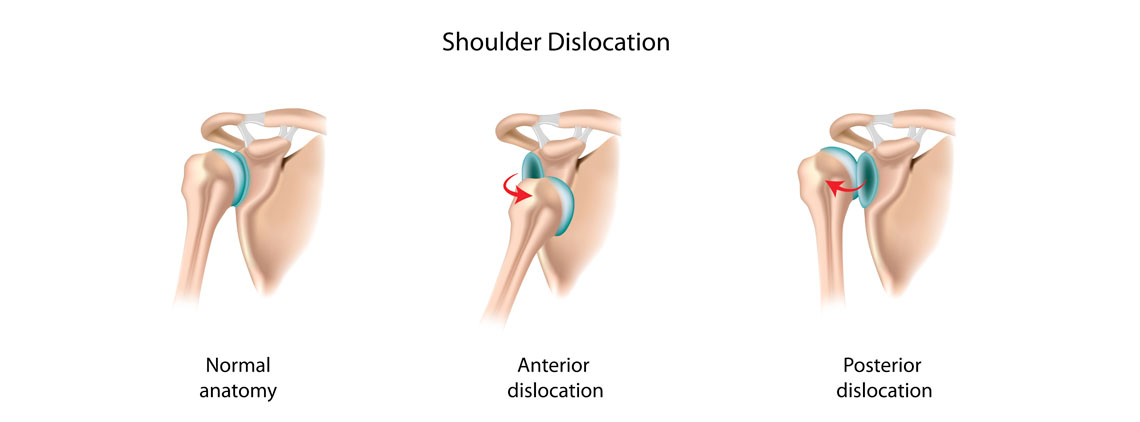
Overview
A shoulder dislocation is common due to the sheer mobility of the shoulder joint. Your shoulder can dislocate forward, backward, or downwards. There are two major types of shoulder dislocations. The first type is partial dislocation. The second is a complete shoulder dislocation. A partial shoulder dislocation is when your arm bone (humerus) is partially out of the socket joint (glenoid). While a complete dislocation is when your arm bone is completely out of the socket joint. Due to the severity of some dislocations, you may also have torn ligaments or tendons in your shoulder.
If you have a shoulder dislocation you may experience symptoms like your shoulder not looking normal (deformity), swelling, weakness, pain, bruising, and numbness. Call us immediately if your hand or arm turns purple or if you’re experiencing chills and/or a fever. Many athletes in high contact sports like rugby experience shoulder dislocations. You can also get a dislocated shoulder from being in a traffic accident or falling on your outstretched arm.
Nonsurgical Treatment Options for Shoulder Dislocation
After we examine your shoulder and position the arm bone (humerus) back into the socket joint (glenoid) we may determine that the best treatment is through the use of an arm sling and rest. Ice your shoulder for 20-minute intervals several times a day; wrap the ice pack in a towel before placing it on your skin. The majority of your pain should subside after your shoulder is put back in place however the ice helps with the swelling. Exercises will be provided for you to do at home in order to regain your shoulder’s range of motion and strengthen your muscles. These exercises are extremely important in the prevention of future dislocation. In the beginning, do not lift or carry weight on this arm, and as you progress it will be suggested to add weights over time in your daily activity and exercises that were provided.
Sometimes, due to the severity of your shoulder dislocation or due to the recurrence of the injury, surgery may be suggested. During surgery, we will have the opportunity to repair tightened or stretched-out ligaments that hold these bones in place.
To prevent getting a dislocated shoulder you should maintain your muscle strength and flexibility.
